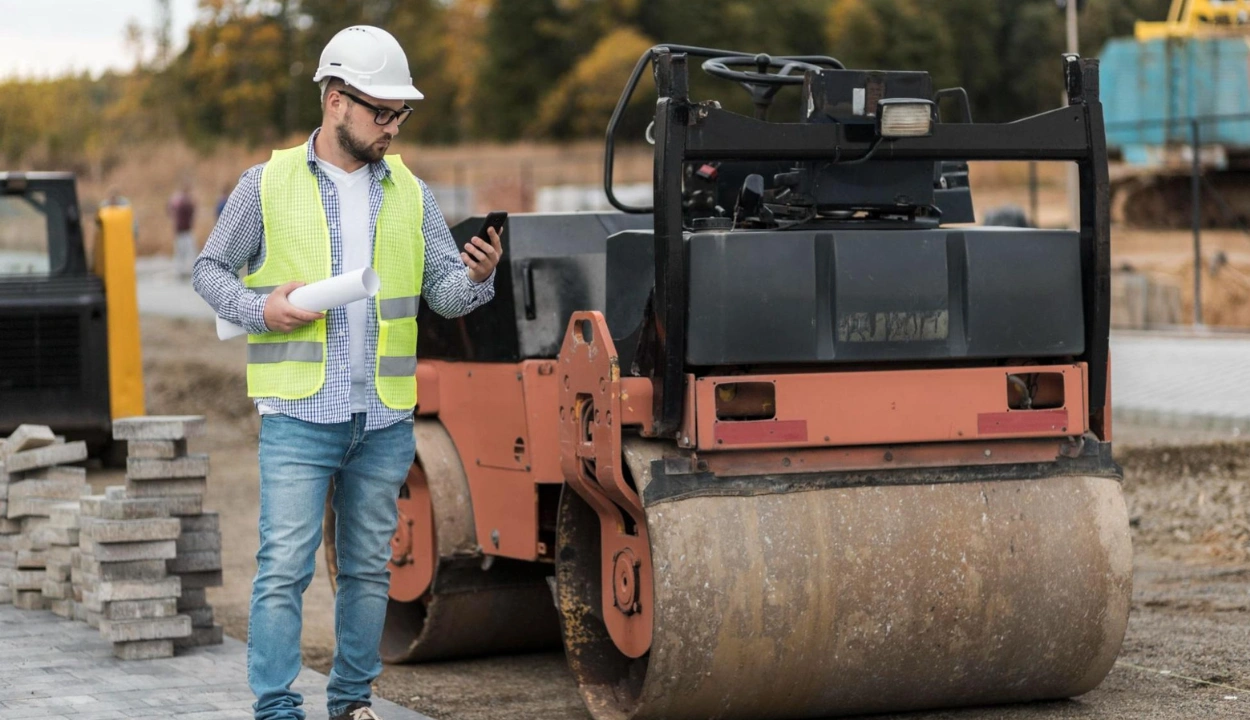How to Handle Software Downtime in Construction Management?
While downtime can be chaotic for businesses, they need to stay prepared to ensure they can pull out all the stops.
The examples of downtime losses are endless; however, when it comes to the construction business, it can be a lot more dangerous.
But there's nothing to worry about, as where there's a will, there's always a way.
The bigger picture is that it all depends on how you handle it.
The smarter the era, the wiser the tactics.
This article will cover how to handle software downtime in construction management.
So, hold your horses and let's get into the details.
What are the Causes of Equipment Downtime and Calculating the Cost?

Equipment downtime occurs due to unexpected disruptions or machine failures.
Some reasons include poor maintenance, tool failure, operator error, poor planning, inventory issues, lack of communication, or unoptimized changeovers.
According to a study, 82% of companies have faced downtime in the last few years, lasting for an average of four hours.
Moreover, manufacturers face 800 hours of downtime every year.
You can calculate equipment downtime's cost by checking the decrease in revenue during downtime.
Look at the products you produced during that period against the money you received for each product.
In 2016, the average cost of downtime for businesses was $260,000.
Strategies For Minimizing Downtime
Minimizing downtime is essential for construction industries to optimize workflow and reap double profits.
Here are some of the common strategies you can implement for minimizing downtime:
1. Make a List of Your Equipment
Make a list of the construction equipment you own.
It will include heavy construction equipment, trucks, and smaller essential machines and tools.
Keep their record by age, serial number, or any prominent characteristics.
For instance, if you have a fleet of excavators, you could note down details such as their purchase date, maintenance history, and any recurring issues they might have.
This allows you to prioritize maintenance tasks based on criticality and plan for replacements or upgrades as needed.
2. Perform a Risk Audit
This may sound scary, but it isn't at all; instead, it is necessary for construction management.
Suppose you have 25-year-old construction equipment.
It is at risk of failure, and the manufacturing company provides no support.
Replacing it will be a better decision because repairing it would cost more.
In 2018, 44% of the time, aging equipment was the reason when equipment stopped working.
Performing a risk audit will help you learn which equipment poses a risk to your maintenance team's safety.
3. Look at the Data
After the risk audit, it's time to look at the data.
Determine why each machine's downtime, dictate when it will fail next time, and design a preventive maintenance plan.
Notice the construction equipment downtime trends and use the data effectively.
Analyzing data with construction equipment utilization software and identify patterns and trends in equipment failures.
For example, your hydraulic excavators experience hydraulic system failures during summer due to increased workload and heat stress.
4. Assign Duties to Your Employees
You need to maximize the productivity and effectiveness of servicing and repairs, so assign duties to your employees.
For example, you can assign your shift supervisor to inspect the equipment when a shift ends and report damages.
Ask specific employees to do a detailed inspection weekly or monthly.
Be clear on who will report regarding the issues with your equipment and minimize downtime in the construction industry.
5. Communicate Effectively
To reduce downtime, you need to communicate effectively with your team.
Elaborate on the benefits of maintaining your equipment and how it benefits the company, your co-workers, and your team.
For instance, you assign a qualified technician to conduct daily inspections of all heavy machinery before each shift begins.
6. Using Software to Reduce Downtime
Construction equipment maintenance software can decrease downtime since your team reports all the routine maintenance details in a computerized maintenance management system (CMMS).
Downtime calculation software enables you to calculate the mean time between failures (MTBF) according to your machine's frequent downtime.
When the best downtime software has the feature of utilization data checking, it informs you when your machine will break down again, reducing downtime and improving maintenance management.
7. Set Up a Maintenance Plan
A preventive maintenance plan will help you avoid costly downtime, reduce unscheduled downtime, and save your employees time.
Catching issues before they become complicated or result in machine failure will enable you to order spare parts and do regular maintenance.
You can avoid costly shipping expenses, reduce production, and save money that would otherwise go to employee overtime compensation.
Save Time and Cost with Construction Equipment Management Software
You can save more time and money with construction equipment management software.
Here's how you can do that by checking some essential factors before selecting software to prevent downtime:
Scalability
Choose software that can accommodate your business's growing needs without requiring you to transform your preventive maintenance software solution completely.
Check whether the software will handle increased users, assets, or locations.
When you plan to expand, the software must be able to scale according to your business needs.
User-friendly Interface
A user-friendly interface is essential for heavy construction equipment industries, where individuals with different technical expertise use software.
Software must be intuitive and easy to navigate, with accessible features, icons, and straightforward menus.
Clue has it all: customized icons, an easy-to-use home screen, and everything required for a great user experience.
Customization
Customizing software to match your business's requirements is a must-have feature.
All construction companies have different needs and systems, so software must be able to adapt to them.
Find software that can customize alerts, reports, tasks, and features that align with your process and preferences.
The customization ensures that software fulfils a company's specific requirements instead of forcing it to adjust its workflow according to its rigid system.
Customer Support
Customer support is important when implementing and using software.
Check reviews about the software provider to see whether they offer excellent customer service, such as continued support, training, and onboarding assistance.
You need a knowledgeable and responsive team to implement the software and use it effectively.
They'll help you with several issues, and you can ask questions using the software.
Mobile Access
Mobile access is necessary in the construction industry. Field personnel require access to maintenance schedules, on-site heavy equipment, and other critical information.
Thus, choose software that has an application and provides mobile access.
Mobile access must also be user-friendly and optimized for various devices, such as mobile phones and tablets.
It will help your team access vital information and updates regularly, maximizing responsiveness and efficiency.
Manage Software Downtime with Clue Easily!
Software downtime can pose significant challenges for construction projects, causing delays and increasing costs.
To minimize its impact, adopting effective strategies and tools is crucial.
Features like real-time equipment monitoring, preventive maintenance, and offline capabilities can keep your operations running smoothly, even during disruptions.
Real-time Equipment Monitoring
Keep track of your equipment's activity in real time to quickly spot and address inefficiencies or potential issues, reducing downtime and maintaining productivity.
Preventive Maintenance Planning
Planning maintenance ahead of time helps prevent unexpected breakdowns and ensures that critical machinery remains operational, even during software interruptions.
Fault Code Tracking and Inspection Logs
By logging fault codes and inspection data, you can detect and resolve potential equipment failures before they lead to costly delays.
Offline Capabilities for Continuous Operations
Even without internet access, offline tools ensure data is logged and queued for processing, maintaining seamless operations until connectivity is restored.
Comprehensive Management Dashboard
A centralized management dashboard allows you to manage work orders, track approvals, and streamline maintenance processes, making it easier to recover from downtime efficiently.
These strategies and tools can help construction businesses stay on track and minimize the impact of software downtime on their projects.
Wrap Up
Effective equipment downtime management is crucial for optimizing productivity and minimizing costs in the construction industry.
Companies can proactively address potential issues and maintain smooth operations by implementing strategies such as performing risk audits, analyzing data, and assigning clear responsibilities.
Utilizing advanced software solutions for maintenance planning and downtime calculation further enhances efficiency by predicting equipment failures and facilitating timely repairs.
FAQs
How do you deal with system downtime?
You can adopt an effective maintenance strategy, invest in robust testing, monitor performance metrics, manage your technology updates, and prioritize sharing information and maintaining documents.
What does downtime mean in construction?
In construction, downtime means when work stops due to reduced productivity or other internal or external factors.
What is downtime in project management?
In project management, downtime is when work stops because something isn't working, like a broken tool, a software glitch, or a power outage. It's a period where no progress is made because of these issues.
Transform Your Equipment Management













